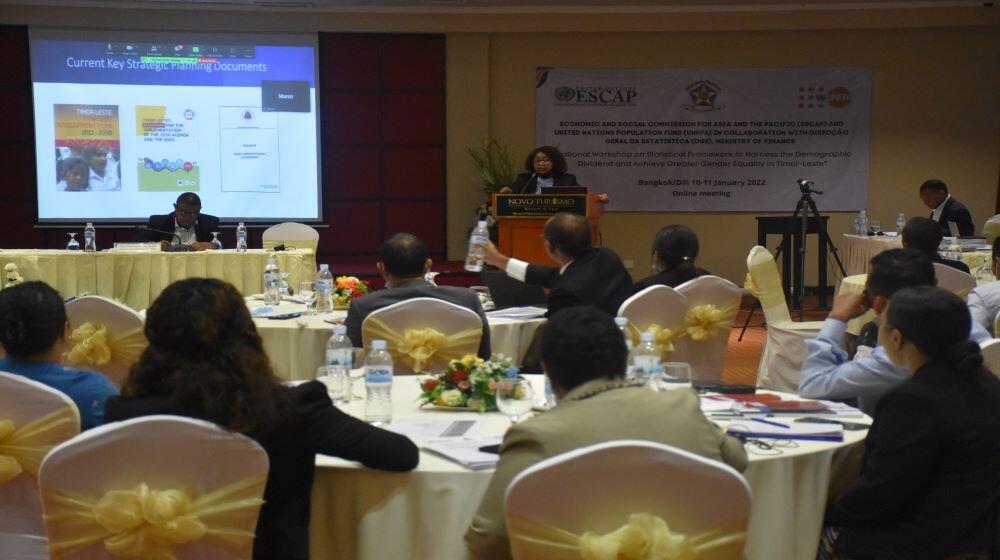DILI, January 14, 2022 – With Timor-Leste having high birth rate, rapid population growth and highest level of fertility in Asia, greater attention on population dynamics like age profile and sex ratio can turn the tide and realize economic growth and greater gender equality in the country.
Participants from Timor-Leste Government ministries, UN agencies, civil society, academia and development partners exchanged ideas in a hybrid workshop (physical and virtual) on taking advantage of changes in population age structure to stimulate economic growth – also known as demographic dividend.
The two-day workshop held from January 10 to 11, dubbed “The National Workshop on Statistical Framework to Harness the Demographic Dividend and Achieve Greater Gender Equality in Timor-Leste”, aimed to reflect on progress of activities and take advantage of demographic dividend.
The workshop was organized by Economic and Social Commission for Asia and the Pacific (ESCAP) in collaboration with UNFPA and the Timor-Leste General Directorate of Statistics (GDS) as part of the Development Account project.
The project connects objectives and actions of the Programme of Action of the 1994 International Conference on Population and Development, the Beijing Declaration and Platform for Action of 1995 and the 2030 Agenda for Sustainable Development, and their regional follow-up documents in relation to challenges and opportunities in using demographic dividend and achieving greater gender equality.
Learning from Timor-Leste population transition, there is a window of opportunity to benefit from a growing working age population and gain the demographic dividend. A shift from high to low fertility can lead to a decline in ratio of dependents to working-age adults.
“The number of people of productive age can form a golden generation in a country. The golden generation can be interpreted as a creative successor able to assume responsibility and build nations,“ said Mr. Elias dos Santos Ferreira, Director General of Statistics, Timor-Leste in his opening remarks.
Similarly, Ms. Sabine Henning, Chief, Sustainable Demographic Transition Section, ESCAP, emphasized the importance of harnessing shifts in population structures for sustainable development and capitalize on economic pointers from census and other statistical indicators.
Since demographic dividend is not an automatic process, it can only be achieved through concerted efforts and investments in specific areas that also form sectorial pillars for harnessing the demographic dividend for economic growth, improved gender equality and for achievement of SDGs.
The five key sectoral domains for harnessing the demographic dividend include; demography, health and well-being, education, economic structures and participation in productive activities, and governance and decision making.
“For countries to develop policies and investments to secure their future it requires that governments know the size, sex, location and age structure of their present and future populations,” observes Dr. Domingas Bernardo, UNFPA Timor-Leste Assistant Country Representative.
“The demographic dividend has long been viewed as one of the most important factor in pursuing sustainable economic development because changes in the age structure of the population will increase the number of productive age range from 15-65 to participate in the labor force.”
For more information, contact:
Suleiman Okoth
Communications and Programme Support Specialist
United Nations Population Fund (UNFPA), Timor-Leste
UN House, Caicoli Street
Dili, Timor-Leste
Mobile: +670 75169796
WhatsApp: +254 780534026
Email; okoth@unfpa.org


